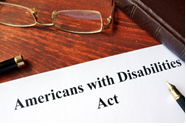 Success in mainstream classrooms when you have a hearing loss is often a substantial challenge for our students. Even in 2016 the option of meeting the needs of students with disabilities in virtual school learning programs was considered. A letter from the US Department of Education defined a school’s responsibilities to students with disabilities enrolled in virtual learning settings. The letter affirmed that virtual schools must carry out the requirements of IDEA just as they must in physical schools.
Success in mainstream classrooms when you have a hearing loss is often a substantial challenge for our students. Even in 2016 the option of meeting the needs of students with disabilities in virtual school learning programs was considered. A letter from the US Department of Education defined a school’s responsibilities to students with disabilities enrolled in virtual learning settings. The letter affirmed that virtual schools must carry out the requirements of IDEA just as they must in physical schools.
Link to the August 5, 2016, Office of Special Education Dear Colleague Letter:
See the new video from the Office of Civil Rights on online learning accessibility.
Summary:
- 1. The requirements of IDEA apply to State Education Agencies (SEAs) and Local Education Agencies (LEAs), regardless of whether a child is enrolled in a virtual school that is a public school of the LEA or a public school that is constituted as an LEA by the State.
- 2. Accordingly, the SEA is responsible for ensuring that all LEAs, including virtual schools that operate as LEAs, implement the requirements of IDEA. If a virtual school is a public school of an LEA, the LEA is the entity that would generally be responsible for ensuring that the requirements of Part B are met by that virtual school for children with disabilities participating in the virtual school’s program.
- 3. Each SEA also must have policies and procedures that ensure that children with disabilities who attend virtual school LEAs and virtual schools that are part of LEAs are included in all general State and district-wide assessment programs, including assessments described in section 1111 of the Elementary and Secondary Education Act of 1965, with appropriate accommodations and alternate assessments, where necessary and as indicated in their respective individualized education programs (IEPs). 34 CFR-§300.160.
- 4. Where a virtual school is a public school operated by the LEA in which the parent resides, that LEA generally would be responsible for making FAPE available to an eligible child with a disability. LEAs retain this responsibility even if they choose to contract with virtual schools to provide educational services to children with disabilities.
- 5. In addition to the requirements discussed above, we highlight below some particular requirements under IDEA that responsible LEAs must meet in order to ensure the provision of FAPE to children with disabilities in virtual schools. These LEA responsibilities include, but are not limited to:
- 6. ensuring that each eligible child with a disability has FAPE available to him or her in accordance with 34 CFR-§§300.101 and 300.17
- 7. implementing the evaluation and eligibility requirements in 34 CFR-§§300.300-300.311;
- 8. carrying out the IEP requirements in 34 CFR-§§300.320 through 300.324, including those governing IEP content, IEP Team participants, parent participation, when IEPs must be in effect, consideration of special factors, the development, review, and revision of IEPs, secondary transition services and participation in State and districtwide assessment programs; and
- 9. implementing the requirements in 34 CFR-§§300.114 through 300.117, regarding education in the least restrictive environment, including ensuring the availability of a continuum of alternative placements to provide special education and related services.
The educational rights and protections afforded to children with disabilities and their parents under IDEA must not be diminished or compromised when children with disabilities attend virtual schools that are constituted as LEAs or are public schools of an LEA
Click here to download this article, including author information
